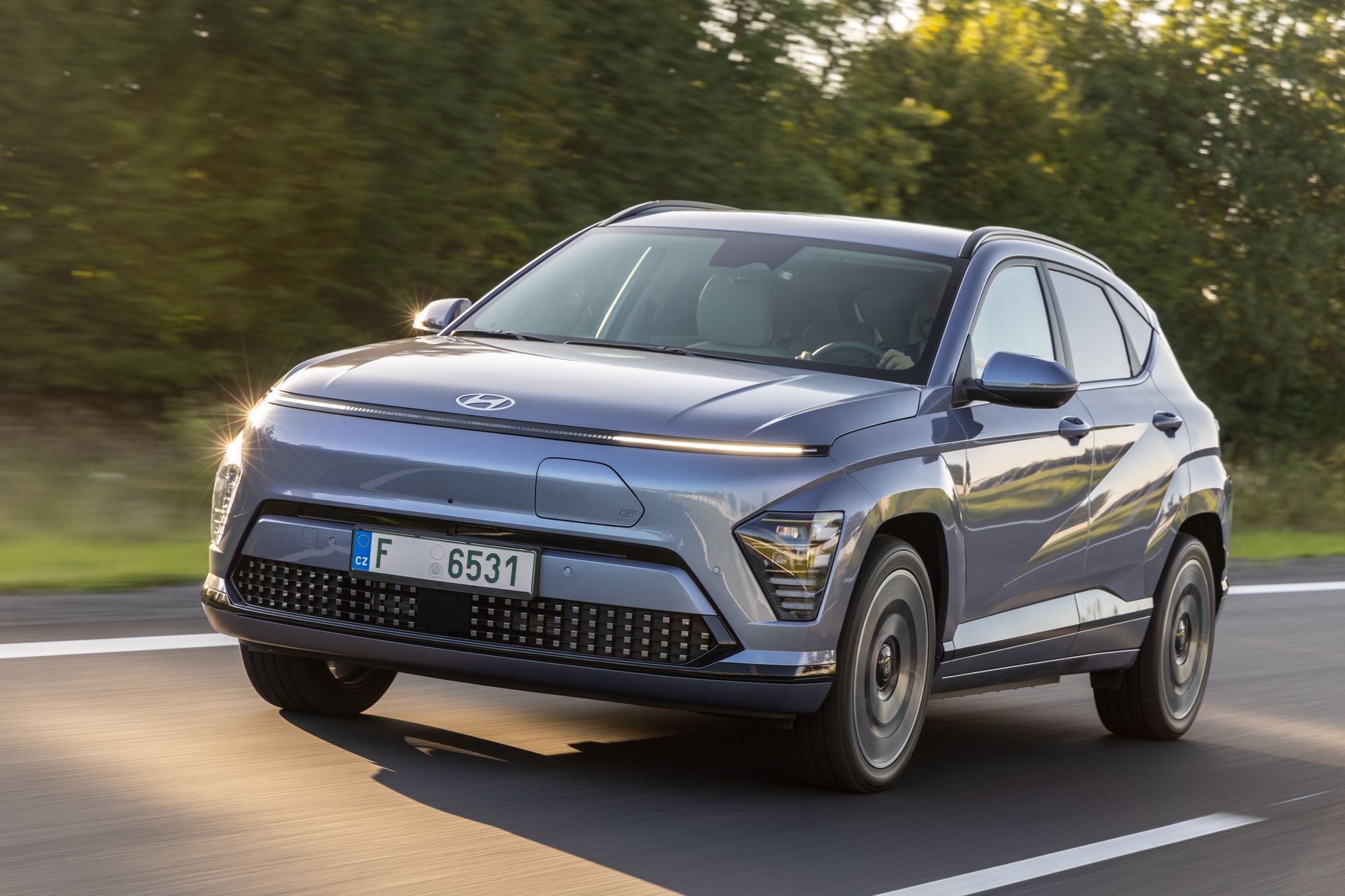Kona EV production moved from Korea to Moravian-Silesian Nošovice. In the picturesque landscape of the Beskydy Mountains, it also had its Czech premiere, which was also attended by our editors.
If there were an alien design competition, the new Kona would probably aspire to the gold medal. Since no one has invented such a competition yet, Hyundai wants to enter the novelty at least in the competition for the Czech car of the year 2024.
It sounds perhaps too confident, when the second generation of the Kona EV does not actually come with anything revolutionary. It takes over the electric platform from the first generation, and with it also the 400-volt architecture, which is somewhat in the shadow of the 800-volt on-board voltage of the Ioniq 5 and 6 models. We won’t even find recessed door handles, or a version with two motors and all-wheel drive.
However, Kona’s strength lies elsewhere. Its price starts just below 900 thousand crowns, which can spoil the mood not only of European but also of Chinese competitors. And with the arrival of the second generation, the originally somewhat cramped interior with a small trunk became a full-fledged family car, which in its size catches up with the much-loved Tucson in the Czech Republic.
The new Kona has grown in all directions, but by far the most in length (+175 mm), which benefits not only the rear seat passengers, who have more legroom, but mainly the size of the trunk. It jumped by 134 liters between generations.
The usable capacity of the smaller of the two offered batteries has also increased to 48.4 kWh. With it, the Kona will now travel 377 km according to the WLTP methodology, but according to product manager Jan Kubín’s estimates, this version will account for only a fifth of sales. The vast majority of those interested in the Kona prefer to pay an additional 140,000 for a larger battery with 65.4 kWh, which increases the range to 514 kilometers.
A larger battery also brings faster charging, the maximum power is at the limit of 102 kW. And as Kubín promises, the high charging power of around 100 kW will be maintained up to 65% of the charge, at 80% of the charge, roughly 40 kW is still reportedly flowing into the battery.
Meeting the car face to face only confirms the dry numbers. The new Kona looks like a big, solid car, so much so that you don’t want to believe that it still belongs to the B segment. The interior is pleasantly airy, and the front seats mainly take up generous space in width. The unobstructed view from the car of a large part of the hood, but also obliquely forward, is also pleasing, for which we can thank the relatively slim pillars.
Although most of the attention in the interior is captured by the slightly curved display that stretches to the center of the instrument panel, in fact, important onboard functions can still be controlled by physical buttons. There are also the usual paddles under the steering wheel, with which you can choose the degree of recuperation.
When driving calmly, the electric Kona claims about 14 kWh per 100 kilometers, on the highway the consumption rises to twenty. So, considering the size of the car, everything seems to be in the best order.
While the consumption does not spoil the mood of the driver, the same cannot be said about the constant clinking while driving. The Kona emits two types of sounds, one chirp is heard every time the prescribed speed changes, it chirps twice when the driver exceeds the speed limit.
An acoustic warning for exceeding the permitted speed is mandatory for newly homologated cars. Although the Kona emits a slightly more pleasant sound than the Ionic 6 (which is said to be thanks to the development in Nošovice), many automakers can handle this questionable assistant, which does not always work properly, in a more elegant way. And that includes its deactivation, which must be done every time the engine is started.
The manufacturer provides a five-year warranty for the car with no mileage limit, the traction battery can be claimed for eight years up to a mileage of 160,000 kilometers. However, as Jan Kubín points out, there is no need to worry about expensive repairs even after the end of the warranty. The new Kona’s battery now consists of a larger number of modules that can be changed separately – there are 27 of them in total. So if a problem occurs with one of them, the repair will cost tens rather than hundreds of thousands of crowns.
2023-10-06 04:14:57
#Chinese #smile #freezes #Electric #Hyundai #Kona #Nošovice #scores #price #space #Currently.cz


